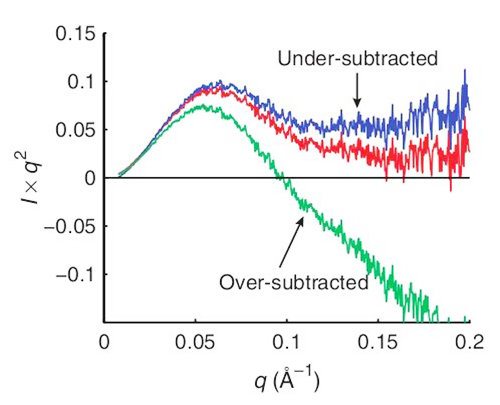X-RAY RUNS: Apply for Beamtime
2017 Nov 1 - Dec 21
2018 Feb 7 - Apr 3
2018 Proposal/BTR deadline: 12/1/17
2018 Apr 11 - Jun 4
2018 Proposal/BTR deadline: 2/1/18
BioSAXS experiments require careful preparation. Many users (even though they may be experienced crystallographers) are new to the technique, and MacCHESS' Richard Gillilan and Alvin Acerbo spend a great deal of time “holding hands” of biologists using the BioSAXS facility for the first time. Gillilan, together with a former MacCHESS postdoc, Soren Skou and long time CHESS user, Nozomi Ando have distilled much of their knowledge into a Nature Protocols article.
BioSAXS (small-angle X-ray scattering applied to biological samples) is increasing rapidly in popularity due to its ability to obtain useful information from biomolecules that cannot be crystallized, or to follow structural changes that cannot occur in the crystalline state. Recent software developments have made it possible to determine molecular shapes, albeit at low resolution, and even to work with mixtures of conformational states. Hence, many biologists who have used crystallography in the past are turning to BioSAXS. However, the challenges facing a BioSAXS user are quite different from those in crystallography, and it is much easier to look at a diffraction pattern and estimate its quality than it is to do the same for a SAXS scattering curve. The article provides a thorough discussion of BioSAXS pitfalls and how to avoid them.
Following the format of Nature Protocols, extremely detailed instructions are provided for every step, from preparing solutions, to contacting beamline personnel, to transporting samples to a synchrotron, to collection of data, to analysis of scattering curves, to comparison with crystal structures. Particularly useful are the troubleshooting section and numerous examples of expected results.

Example of good and bad buffer-subtracted scattering curves, showing the importance of proper matching of sample and reference solutions.
By reading this article first, CHESS BioSAXS users can save time for both themselves (they can get started doing experiments faster) and MacCHESS staff (who will have more time to work on new technical developments).
Reference:
[1] Soren Skou, Richard E. Gillilan, and Nozomi Ando, "Synchrotron-based small-angle X-ray
scattering of proteins in solution", Nature Protocols 9 1727-1739 (2014).
(http://www.nature.com/nprot/journal/v9/n7/full/nprot.2014.116.html, or DOI:10.1038/nprot.2014.116)
Submitted by: Marian Szebenyi, MacCHESS, Cornell University
08/05/2014
